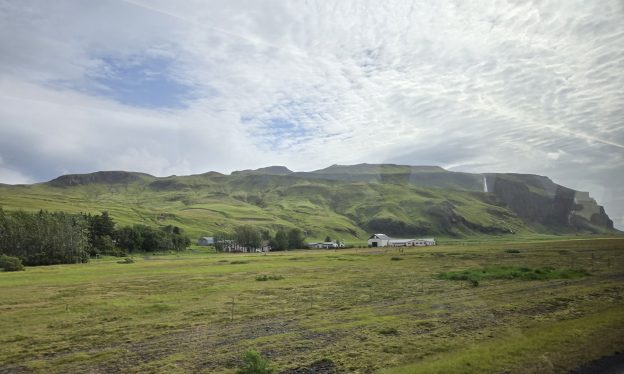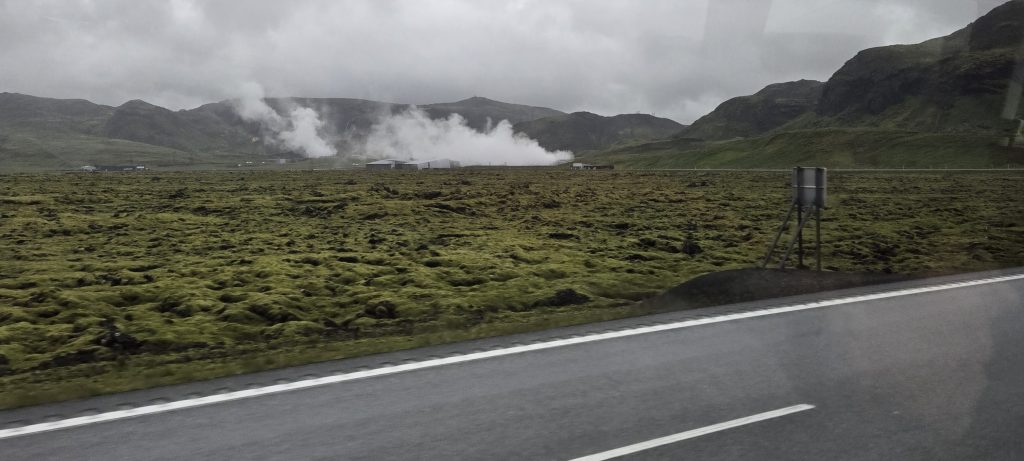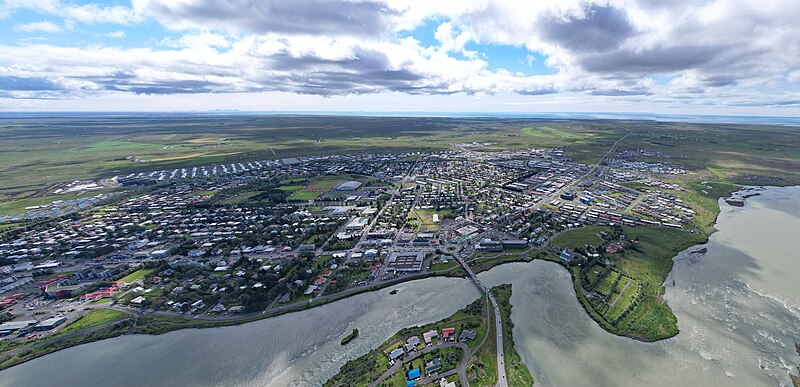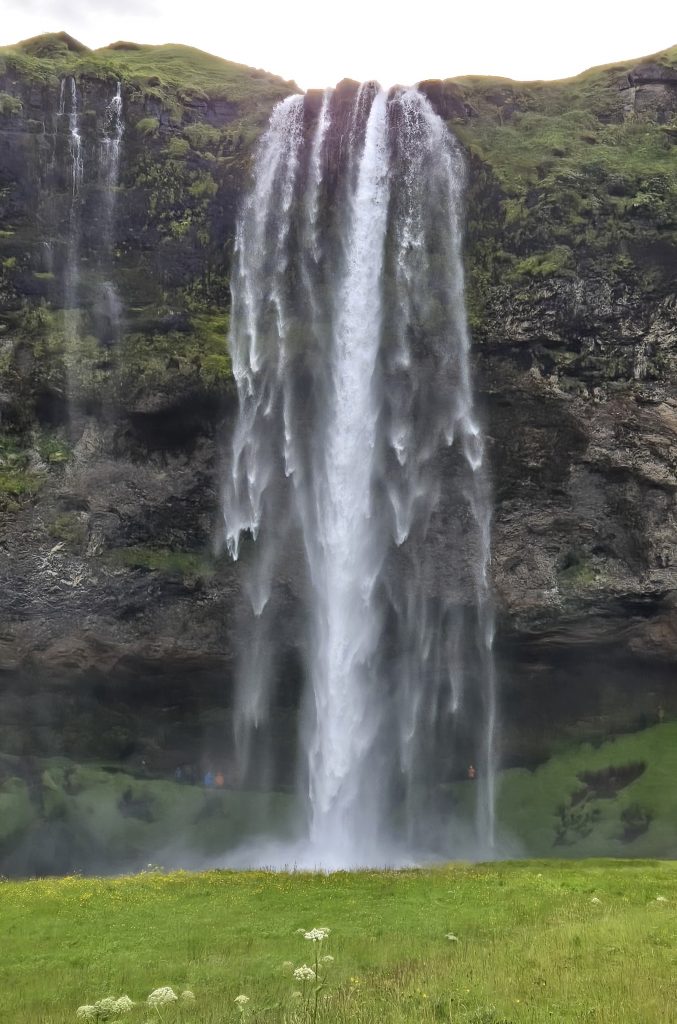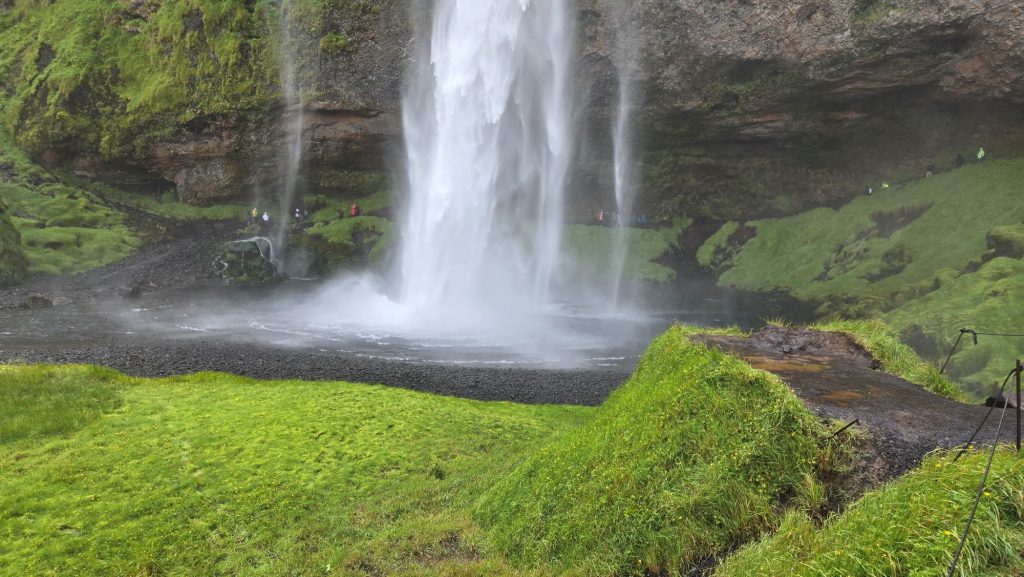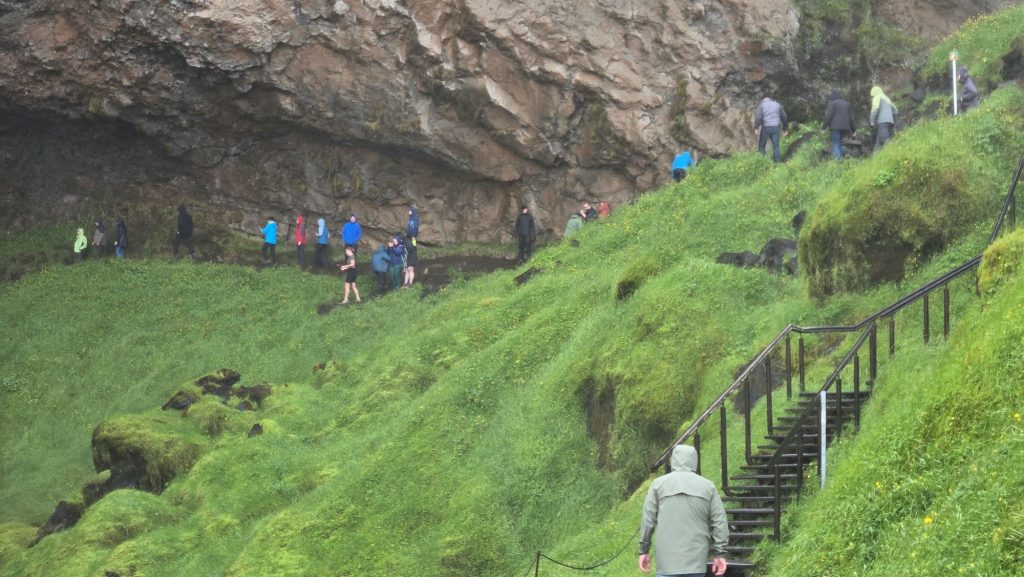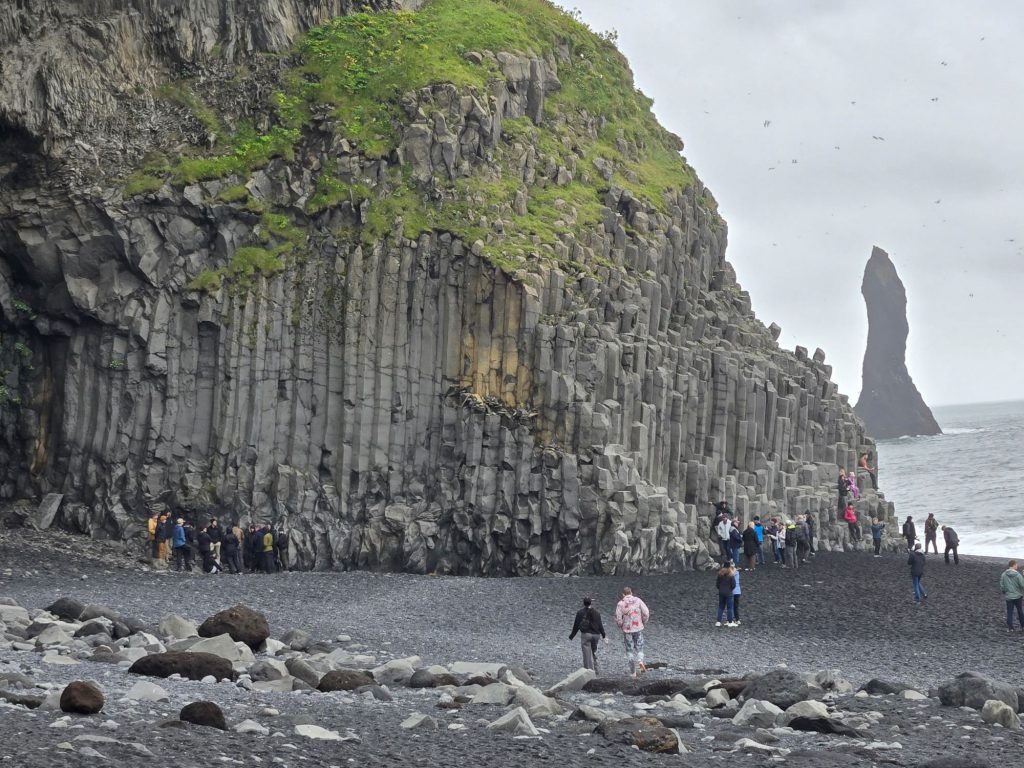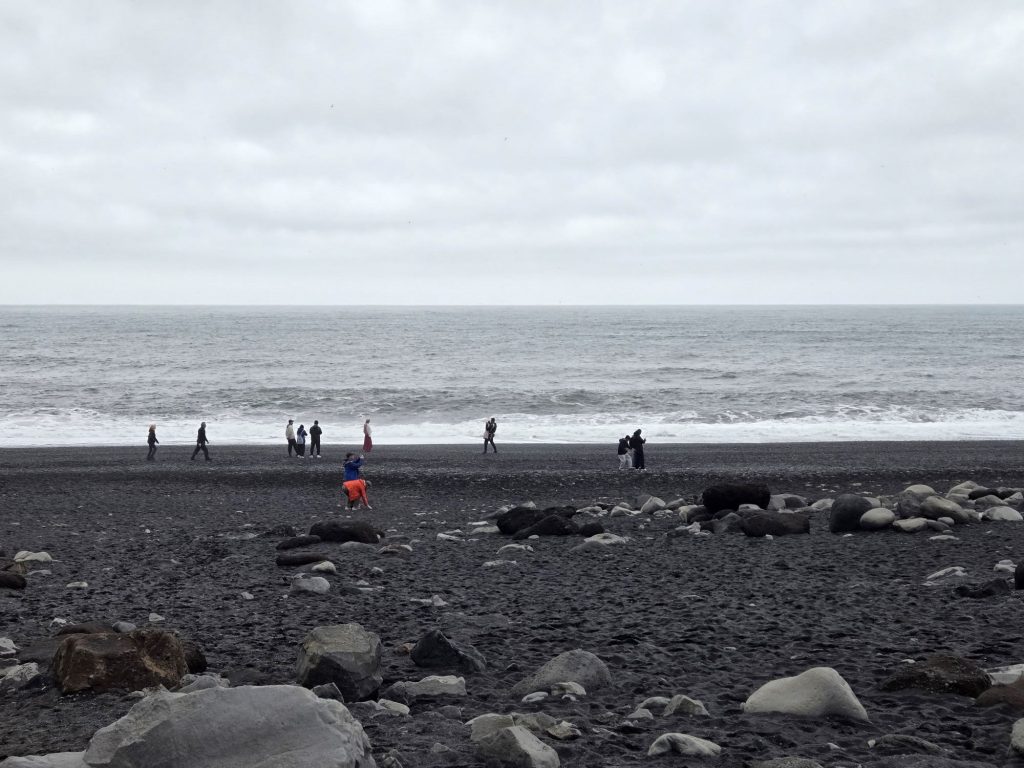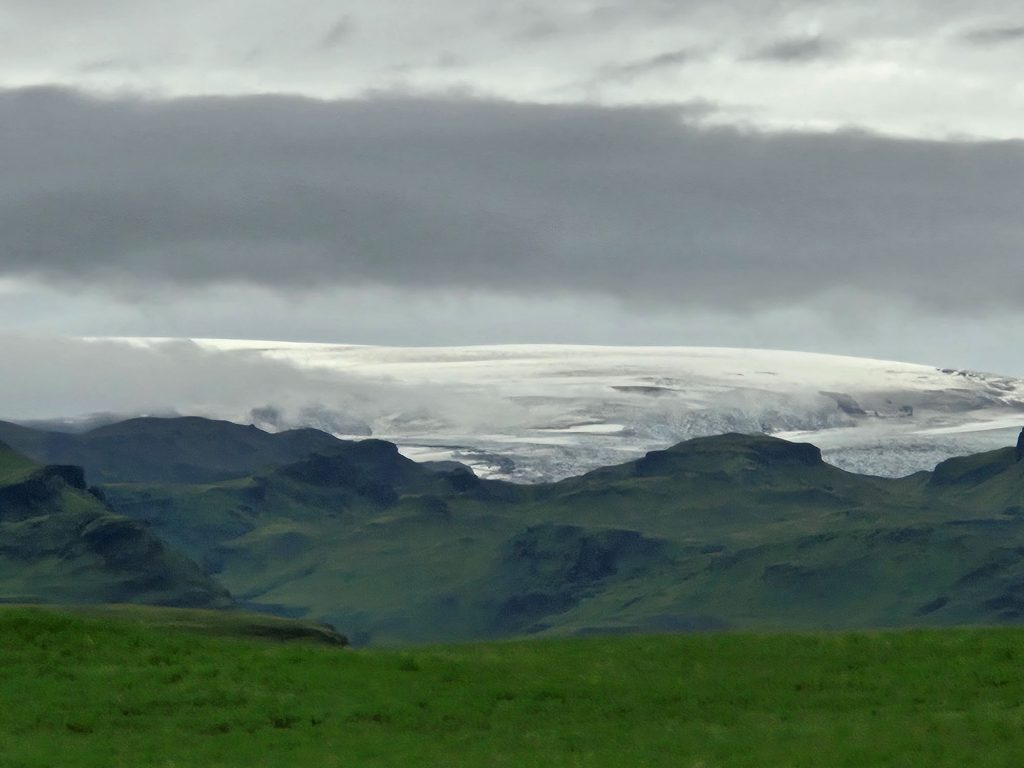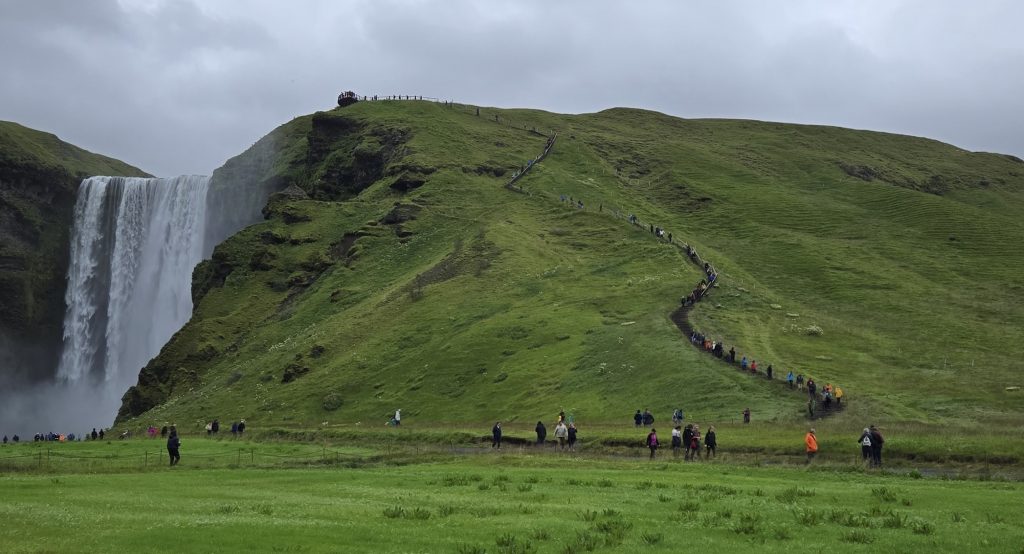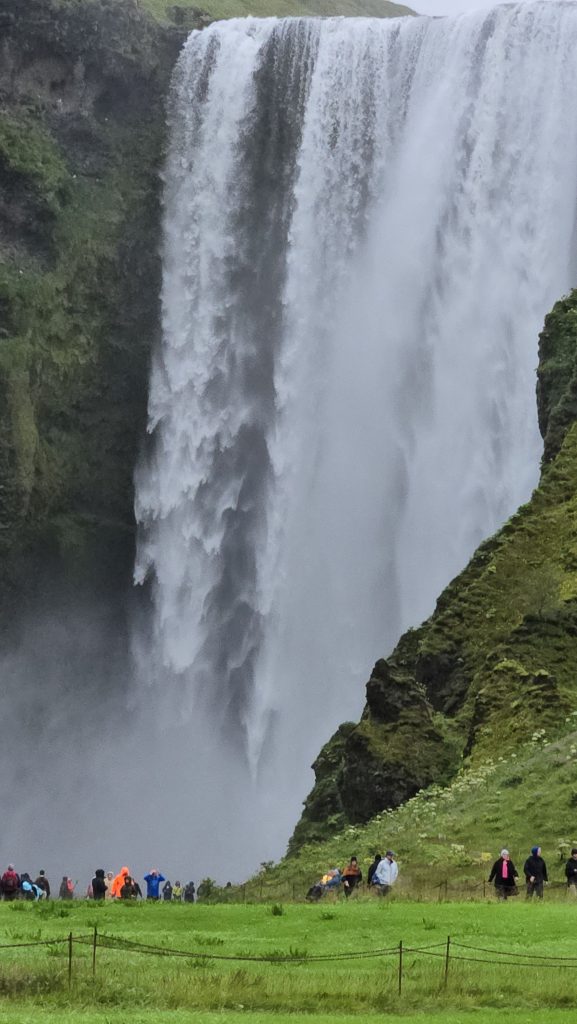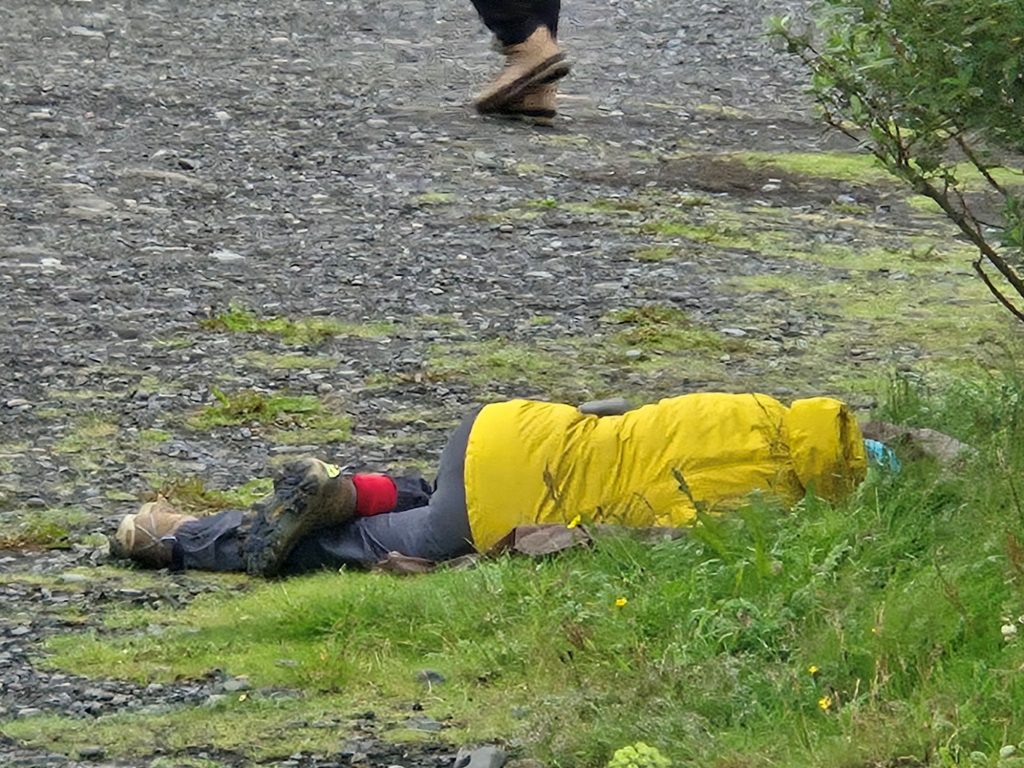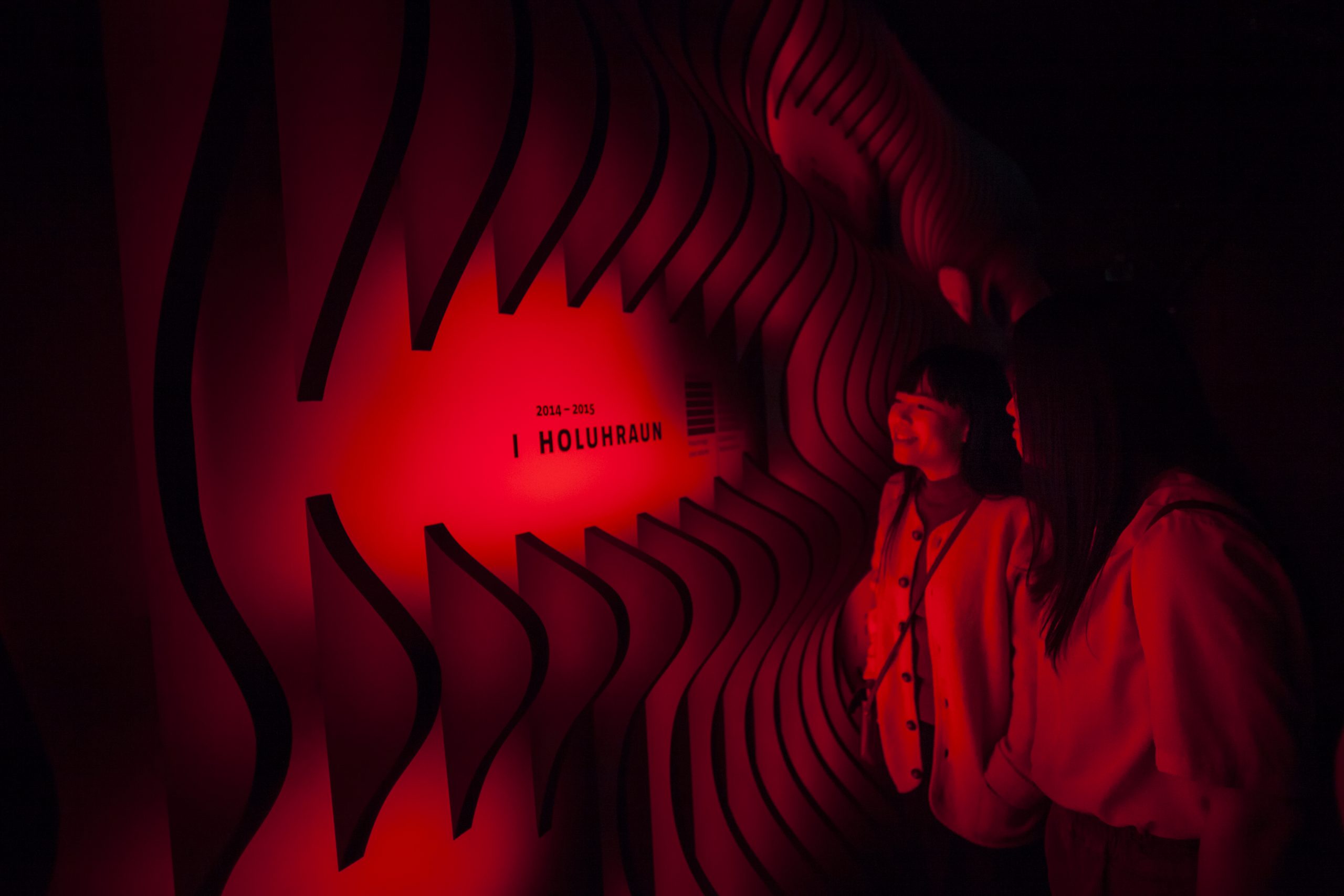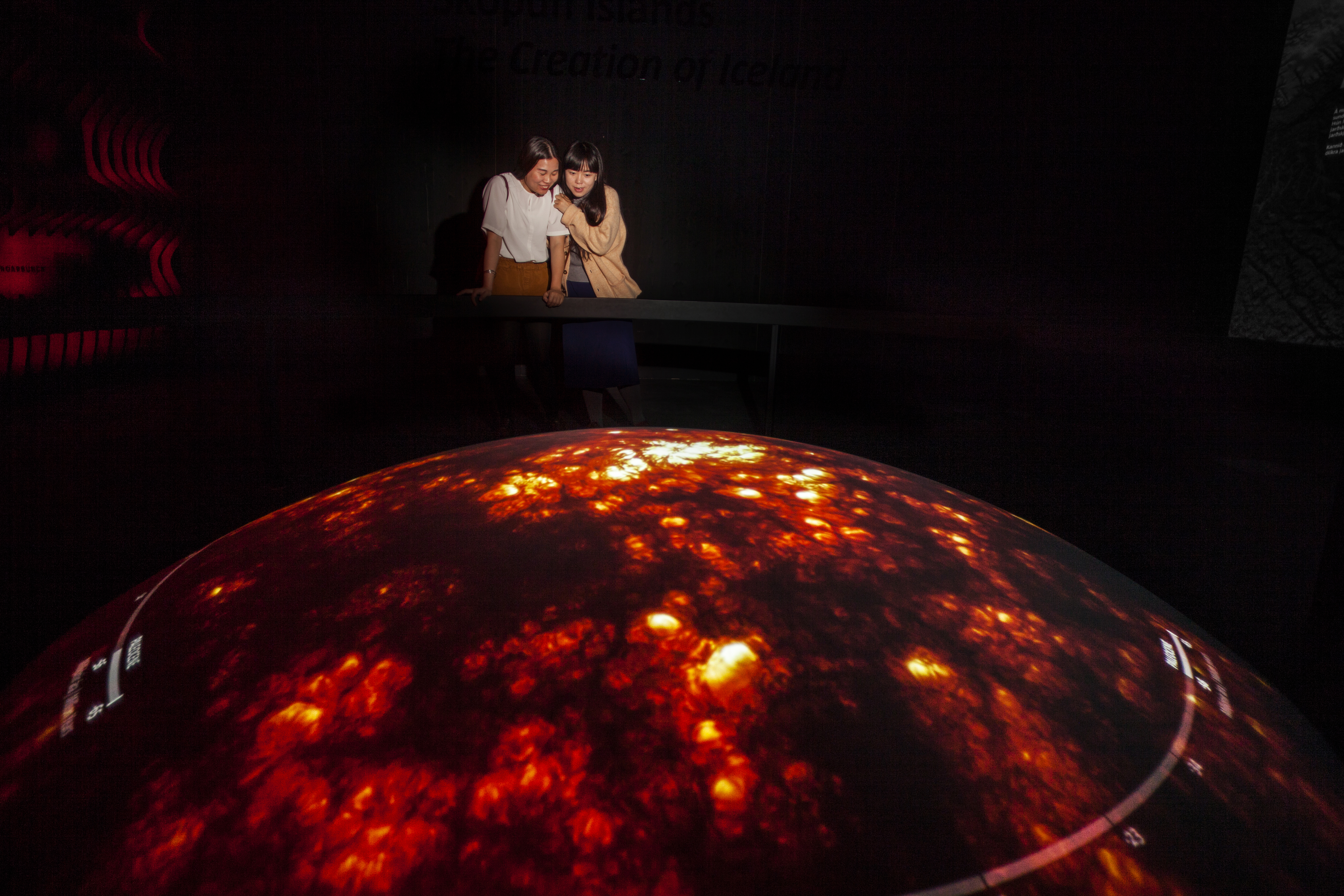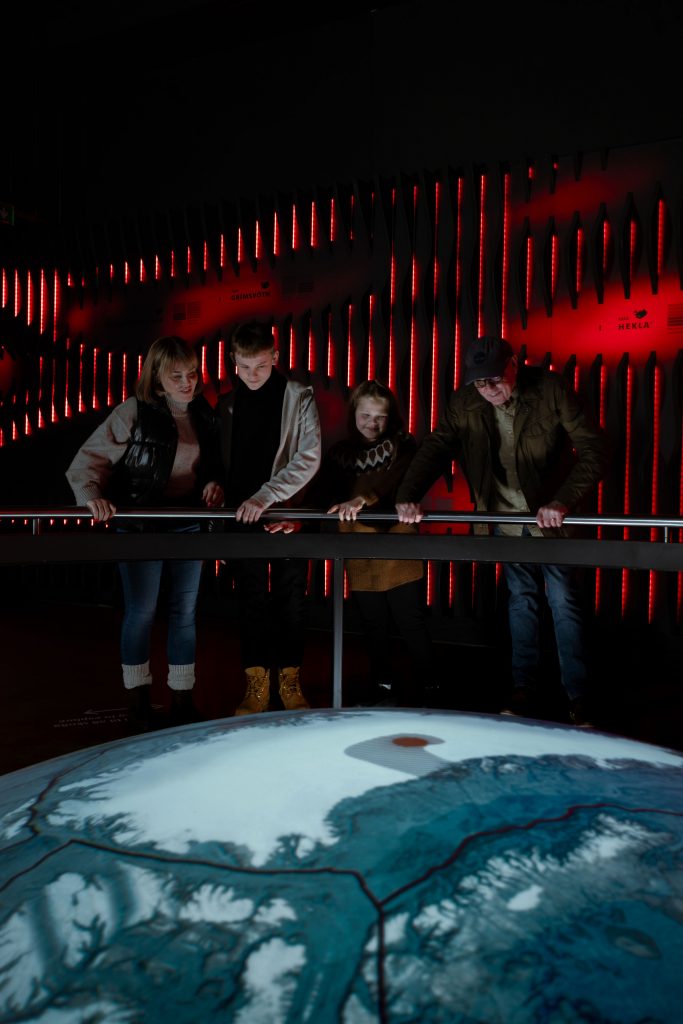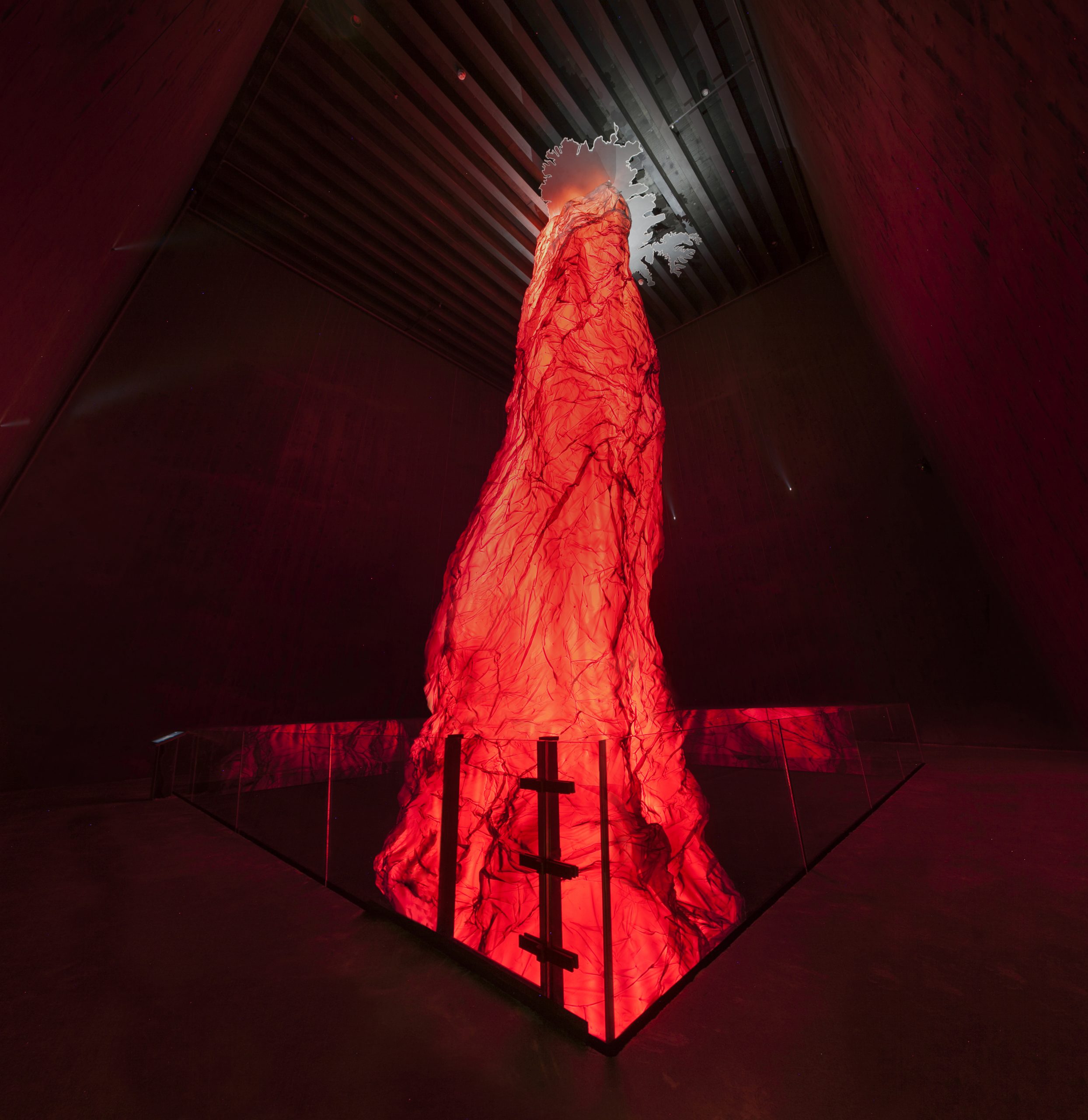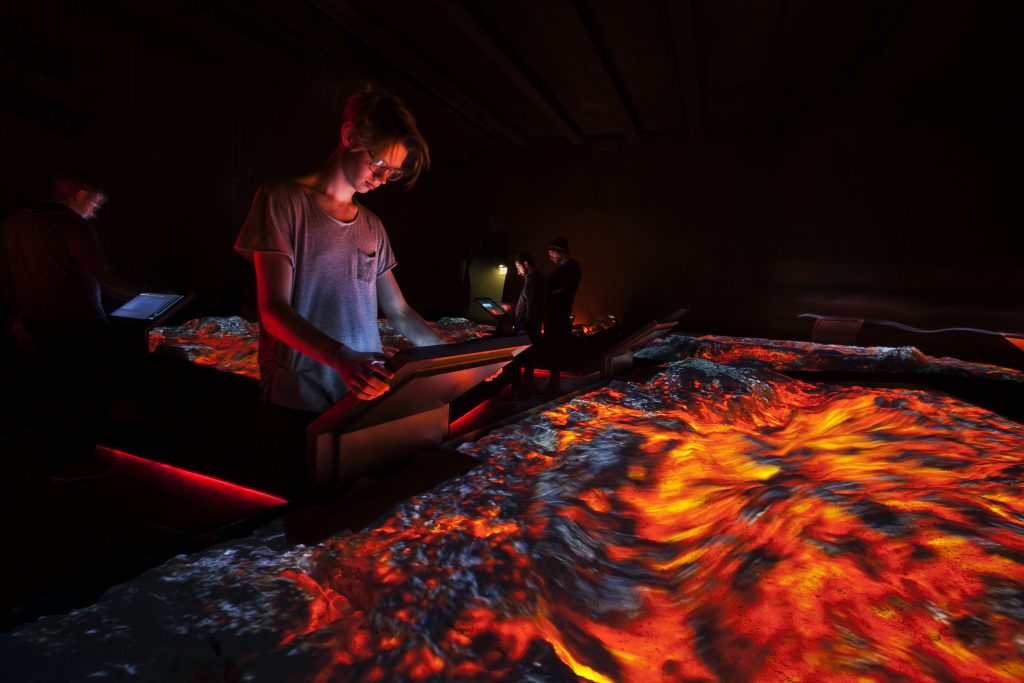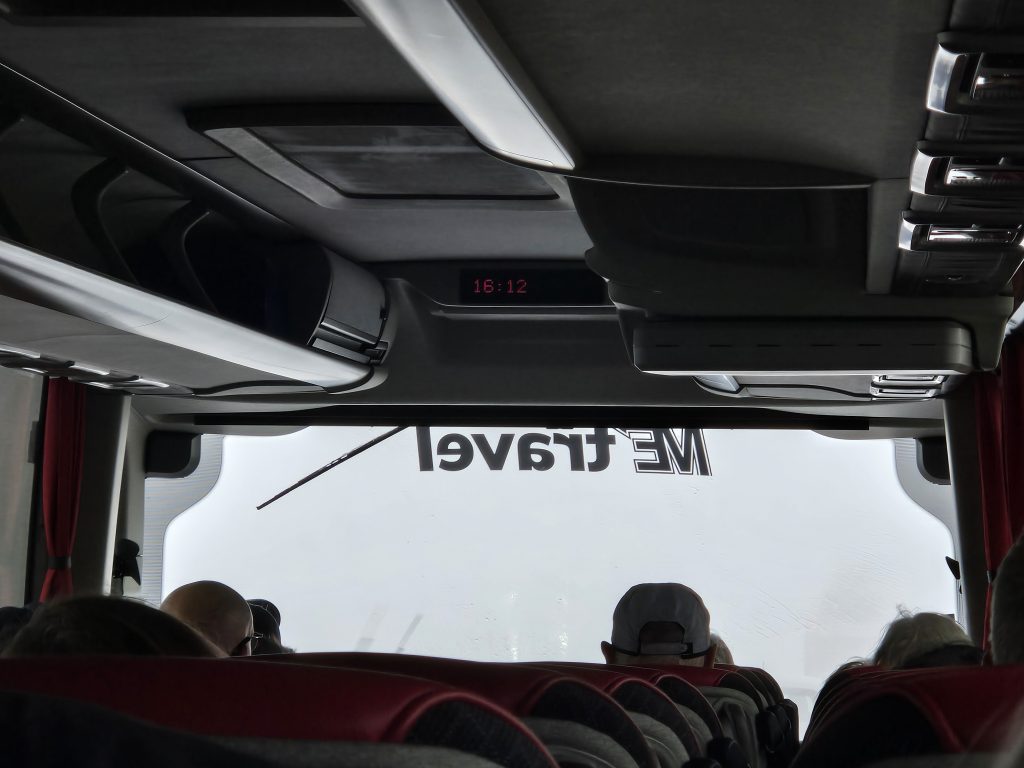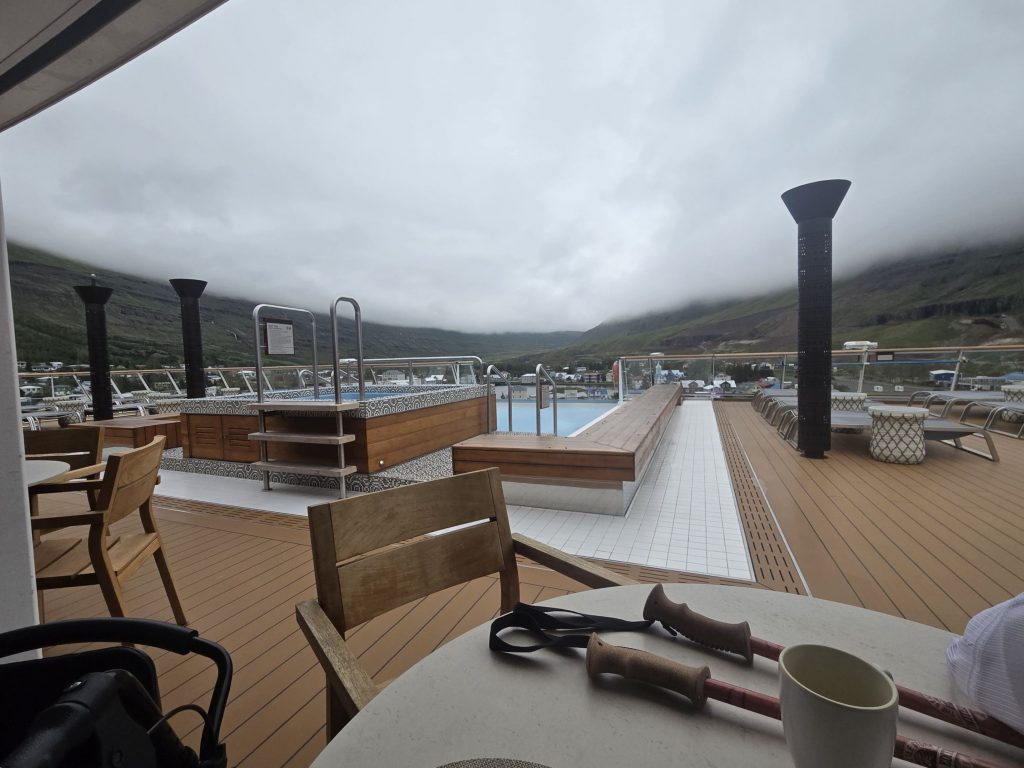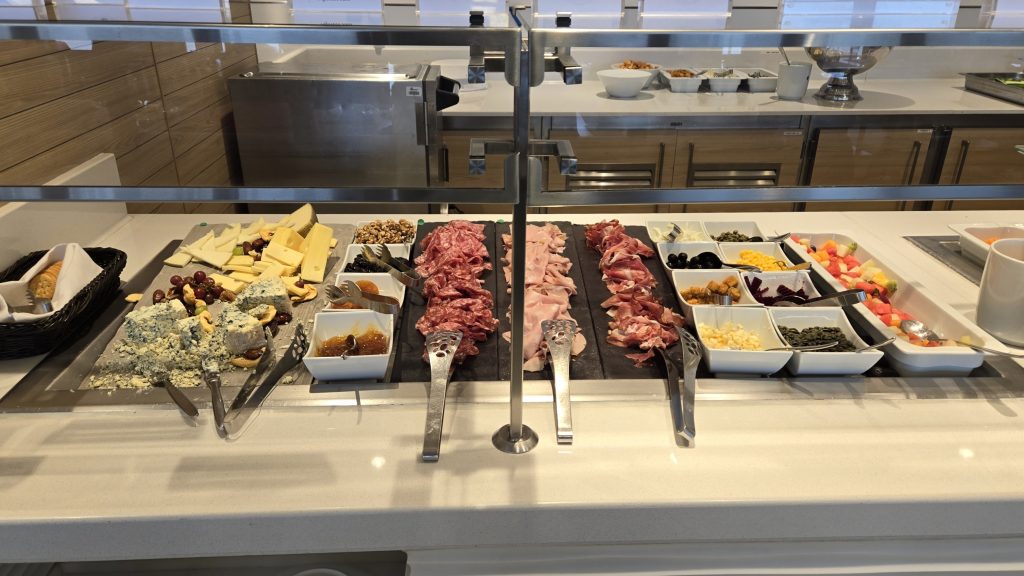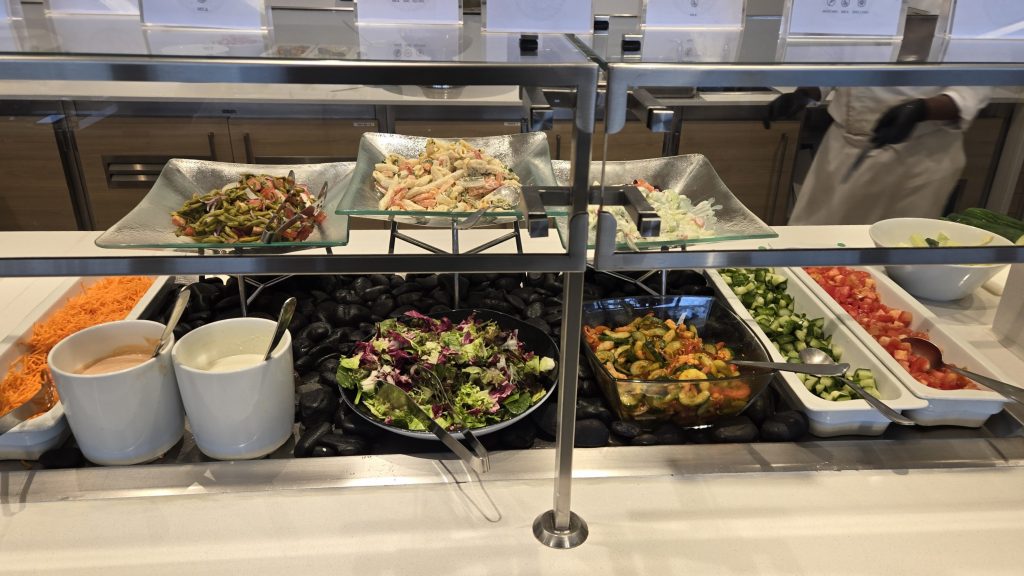I was really looking forward to Seyðisfjörður (“say-this-fyor-thur”), a town in eastern Iceland, sitting at the innermost point of the fjord of the same name. We had turned to streaming services during COVID and discovered Ófærð (Trapped), an Icelandic crime series which was filmed in Siglufjörður in the north and Seyðisfjörður in the east (even though the two towns are four and a half hours apart on the Ring Road and that’s when the weather is good.) The ship passed Siglufjörður during the night on our way to Akureyri, so this would be my only chance to see where part of the series was filmed.
Trapped was our introduction to Nordic Noir – crime fiction that is deeply dark, brooding, and often brutal, unlike the often-stereotypical image of blonde, cheery Scandinavians frolicking in fields under the midnight sun. It is the antithesis of the popular British “cozy murder mystery” like Midsomer Murders, Father Brown, anything Agatha Christie and Grantchester. Henning Mankell is considered to be the father of Nordic Noir with his Kurt Wallander books. Other noted authors are Sweden’s Steig Larsson (The Girl With the Dragon Tattoo), Iceland’s Arnaldur Indriðason (Detective Erlendur), Norway’s Jo Nesbø (Detective Harry Hole). and Finland’s Leena Lehtolainen (Detective Maria Kallio).
In the first season of Trapped, Andre Olofsson, the police chief of an isolated town in Iceland, tries to unravel the murder of a man whose frozen torso is discovered in the harbor, while also dealing with his dysfunctional marriage. (Ólafur Darri Ólafsson, who bears a striking resemblance to our nephew Christopher, plays Andre) We saw it on Amazon Prime, but as of this writing it has moved to Plex, Pluto TV, and The Roku Channel. Watch the trailer here.
But I digress…
We hadn’t ordered room service for breakfast, so we had to get food in the World Café, a big mistake! There were no inside tables at 9a.m., so we filled our plates and went out to the deck, which was really cold. We lasted about 10 minutes before hustling back to the ship’s warmth.
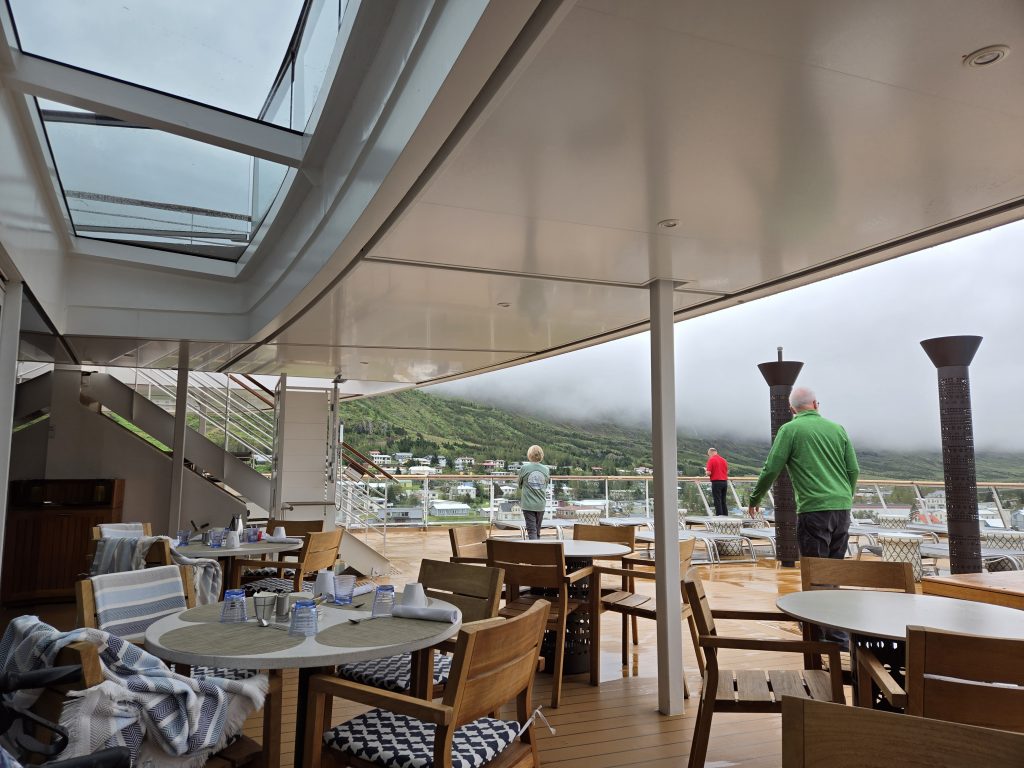
We didn’t get a chance to visit any of the area’s highlights. Our previous excursions combined with the cold, damp weather left us tired and uncomfortable, and we didn’t book one of the bus tours. I had planned on the walking tour of Seyðisfjörður but only got as far as the port terminal before realizing it would not be a great idea. I bought a 2000 ISK (~ $14 US) potholder in the terminal with a 10,000 ISK bill (~ $72 US) just to get smaller denominations for tips and small purchases.
History of Seyðisfjörður
According to Landnámabók, the Icelandic Book of Settlement, Bjólfur (“Byol-foor”), blood brother of the powerful sorcerer Loðmundur the Old, settled in the fjord in the 11th century. There are graves dating back to the 8th century in the area around Seyðisfjörður. The town sits at the base of the mountain named after him, and Bjólfur is thought to be buried near the peak. Esja Architecture designed the Ring of Bjólfur a cantilevered 360° viewing platform, 650m/2133 ft. above the town, which is scheduled to be completed in 2025.
Seyðisfjörður began to develop in 1848 when Norwegian fishermen established the area as a fishing and trading post. There was a modern whaling station in nearby, now abandoned, Vestdalseyri (“Vest-dal-say-ree”) between 1864 and 1866. In 1906 the first telegraph cable from Europe to Iceland terminated in Seyðisfjörður. A dam created across a nearby river was used to create the first hydroelectric plant in Iceland in 1913, supplying electricity to homes and street lights.
Although neutral and united with Denmark, the British Royal Navy and Royal Marines preemptively invaded and occupied Iceland in 1940. The Germans sank the British oil tanker El Grillo (The Cricket) sitting in Seyðisfjörður’s port, on February 11, 1944. The Kaffi Lára El Grillo Bar (named after the El Grillo and the previous occupant, the “legendary” Lára) serves meat, fish and a wide variety of Icelandic beers.
In December 2020 heavy rain triggered a series of mudslides which destroyed twelve houses, damaged more than forty others and the Technical Museum of Iceland. Seyðisfjörður was evacuated and the residents didn’t return until October 2021.
Seyðisfjörður has relied heavily on tourism, even more after Brim Seafood Company’s local, outdated fish-processing plant shut down in 2023.
The Smyril Line’s ferry Norröna, registered in the Faroe Islands, sails between Seyðisfjörður, the Faroe Islands and Hirtshals, Denmark mid-March through late November. The terminal is an international port, so one must show a passport when going through the building in either direction, even though our ship was docked there. (The ferry was central to Trapped Season One’s plot.)
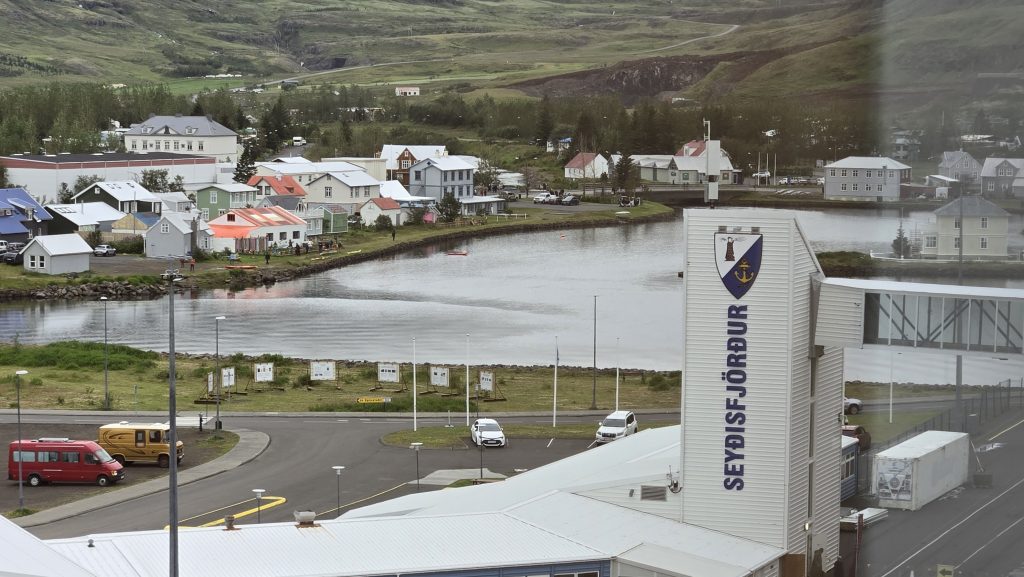
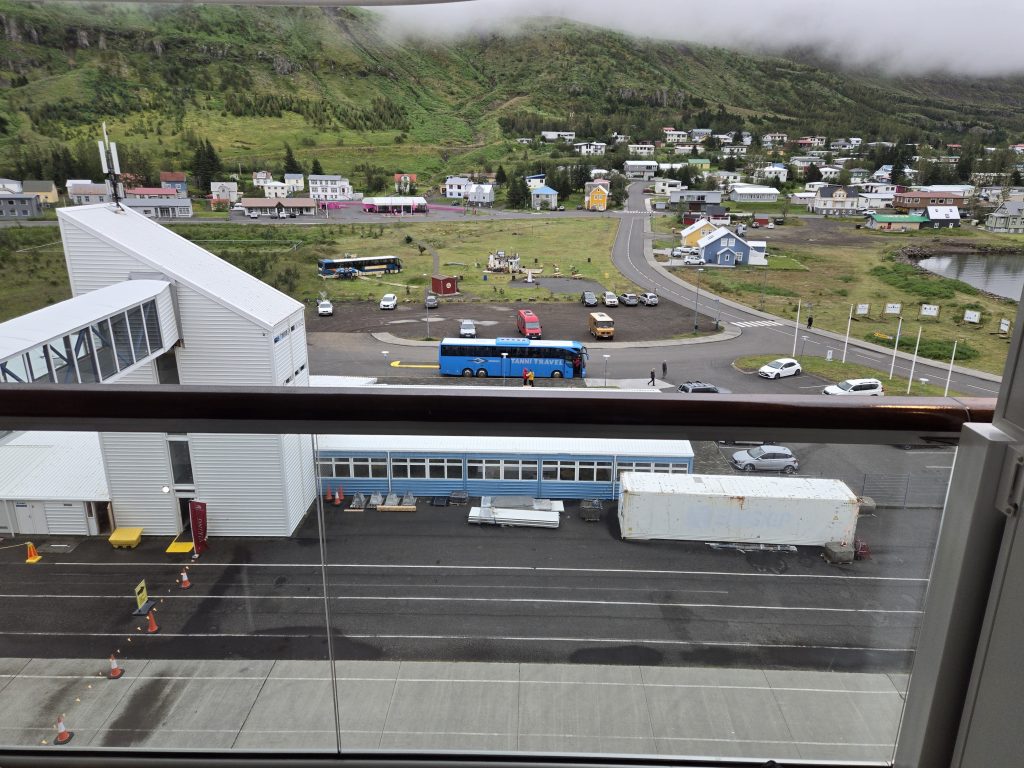
The Road not Traveled
I did some research for this post about the opportunities we missed.
Seyðisfjarðarkirkja (“say-this-fyar-thar-kir-kya””), the iconic Blue Church, is one of the most famous sights in Seyðisfjörður, sitting at one end of Norðurgata (“North-ur-ga-ta”), the Rainbow Walk.
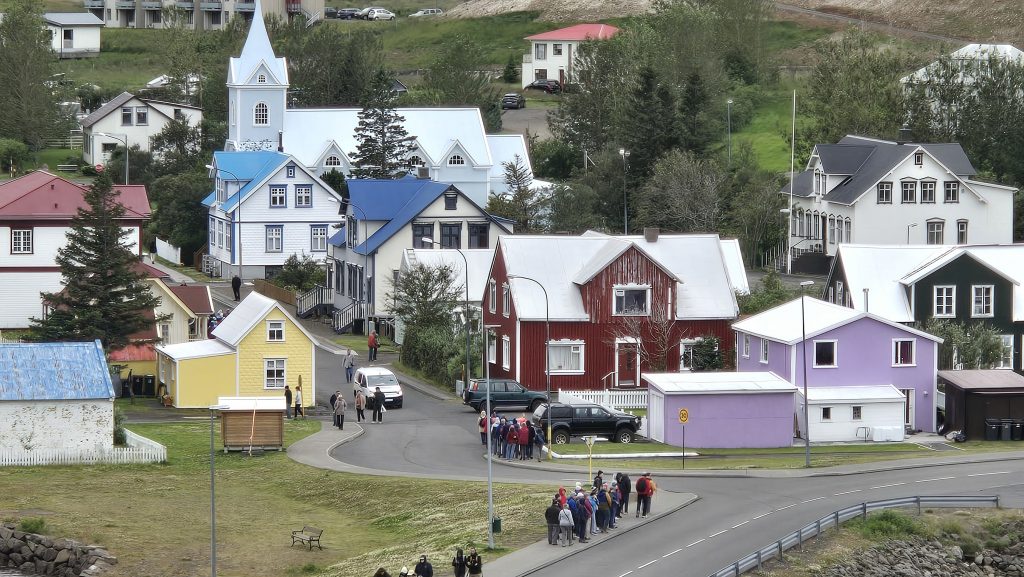
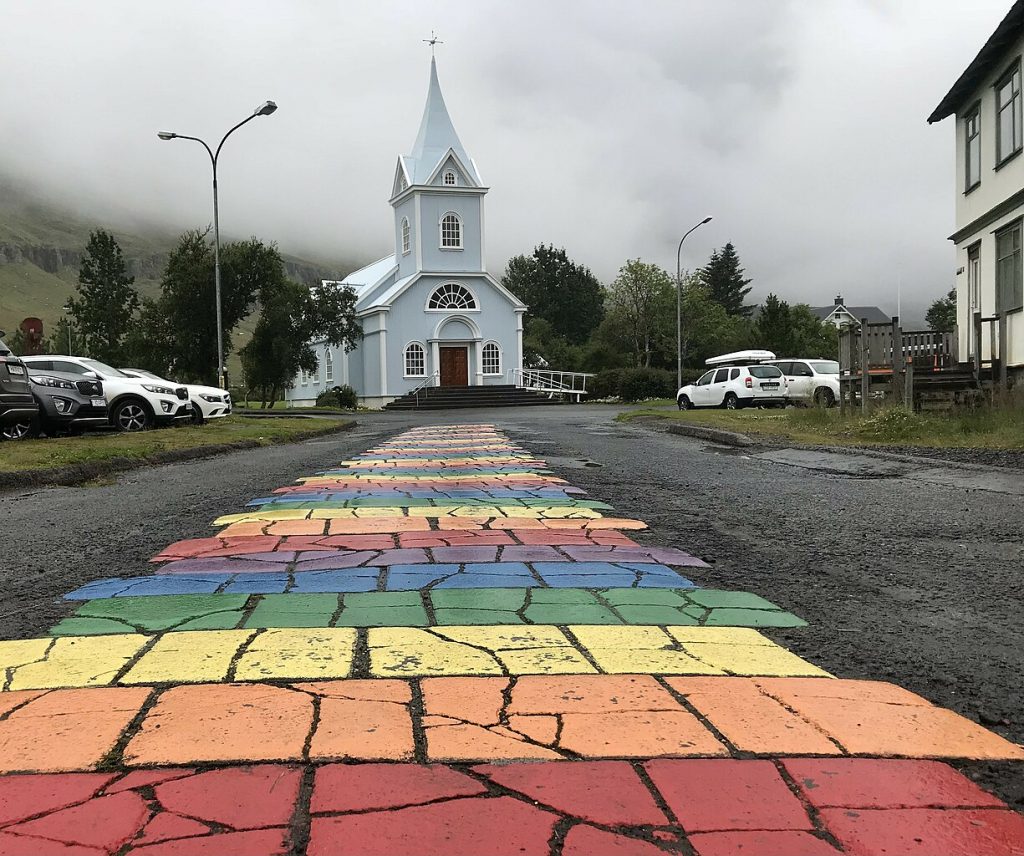
Skálanes (“Skau-la-nes”) Nature and Heritage Center sits on 1250-hectares/3100-acres about 17.4km/11mi northeast of Seyðisfjörður. More than forty bird species make their homes in the cliffs along the coast. Arctic terns and eider ducks have the largest colonies in the area. The ducks shed down from their breasts to keep their eggs warm. Eider down is an excellent insulator and harvesting the down is an Icelandic tradition. People use hay or seaweed to replace the down.

Seyðisfjörður has become a cultural center for artistic creativity. The Skaftfell Center for Visual Art was founded in honor of Dieter Roth, an influential Swiss-German artist who lived here in his later years. The Center supports established and ascending artists with a residency program, hosting exhibitions and seminars. The Skaftfell Bistro, on the Center’s ground floor, is said to be one of the best places to eat in Seydisfjordur,
One of the more intriguing parts of Skaftfell is Tvísöngur (“Tvis-on-gur”), which means “two songs” in Icelandic. Lukas Kühne, a German-born artist, created Tvísöngur, a “site specific sound sculpture” of five interconnected domes of varying dimensions, designed to resonate to specific tones. I don’t understand the physics, but if you are morbidly curious, here’s a link to an academic thesis: Lukas Kühne’s Tvísöngur: Sculpture for a Concrete, Uncompressed Voice
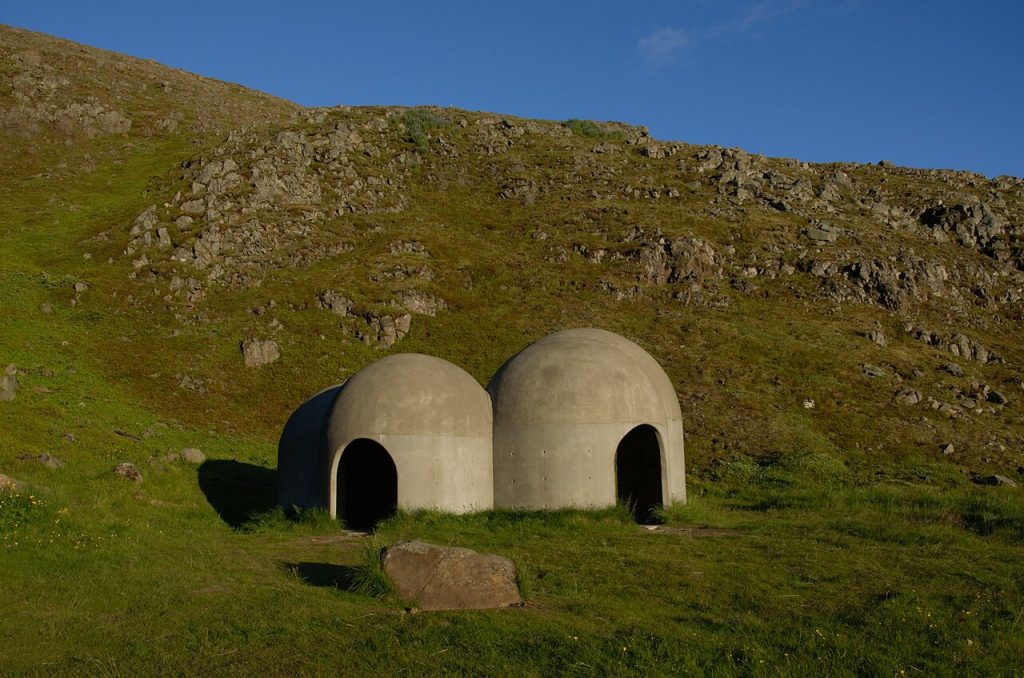
Fjarðarheiði (“Fyar-thar-hay-thi”) is a 24.5km/15.22mi long mountain pass between Seyðisfjörður and Egilsstaðir (“Ae-yil-sta-thir”). The drive takes one from lush countryside to barren tundra at the 623m/2,043ft peak. It is a rather scenic drive if one is blessed with good weather. (We would likely have driven through fog if we’d made the trip). The Fjarðará River (“Fyar-tha-ra”) runs west along the roadway from Seyðisfjörður and is a good place for flyfishing in the summer. During the winter one can ski at Stafdalur Ski Station, (“Staff-da-lure”) a short 7.8km/4.8mi from Seyðisfjörður.
There are several waterfalls between in the area, the largest one being Gufufoss (“Goo-fu-foss”) about 4km/2.5mi southwest of Seyðisfjörður. Gufufoss means “steam waterfall” in Icelandic, so named because of the heavy mists that rise from the base of the falls. Gljúfurfoss (“Glue-fur-foss”), one of two falls with the same name is 5.1km/3mi west of Gufufoss, just east of Lake Heiðarvatn (“Hay-thar-vat”), and not to be confused with the other Lake Heiðarvatn, north of Vik in Southern Iceland.
Fardagafoss (“Far-da-ga-foss”) is 5.4km/3.5mi east of Egilsstaðir, at the roots of Fjarðarheiði. Ancient folklore told of a giant female troll with a large cauldron filled with gold who lived in the now-collapsed lava cave behind the falls. Sensing her coming demise, she pushed the kettle into a deep hole in another, different, falls named Gufufoss. Legend says you can see the kettle’s handle when the water level drops. One can also explore the Fardagafoss Hiking Trail.
Read more: What to do in Seyðisfjörður | The Charming Village in East Iceland
We opted to have lunch again at the Pool Grill, then headed back to our room. Peg spent the afternoon reading and I decided to go back to the Nordic Spa and the timing couldn’t have been better. The first time I saw the spa was early evening, just before dinner and the pool looked like old people soup. This time there was no one in the hot tub, so I tossed my towel and robe on one of the loungers and simmered for about fifteen minutes. From there I went to the steam room, then the snow room. There was still no snow, just the pile of slush in the corner.
Afternoon Tea
Back from the spa, Peg suggested we attend the daily “afternoon tea” in the lanai off the pool deck. A British tradition, afternoon tea was traditionally held around 4pm, when the idle rich indulged in finger sandwiches, scones and pastries along with their tea. High tea was a hardier meal the working class consumed after work. (Remember Roger Daltry in a tub of Heinz Baked Beans: “What’s for tea?”)
We sat on comfortable, low-backed seats with a grand view of the harbor and grey skies. One of the waitstaff brough a plate of scones followed by a three-tiered tray of finger sandwiches and pastries. Peg ordered a pot of tea, and I decided to try out a shot of Linie (“Lee-nee”) a Norwegian aquavit made from potato, flavored with caraway dill, fennel, anise and coriander. It is then matured at sea, in Oloroso sherry casks, during a round-trip voyage between Norway and Australia while crossing the “LINE” (equator) twice. It was…interesting, not as vile as Malört. I thought I’d avail myself of Iceland’s Black Death (Brennivin) before we left.
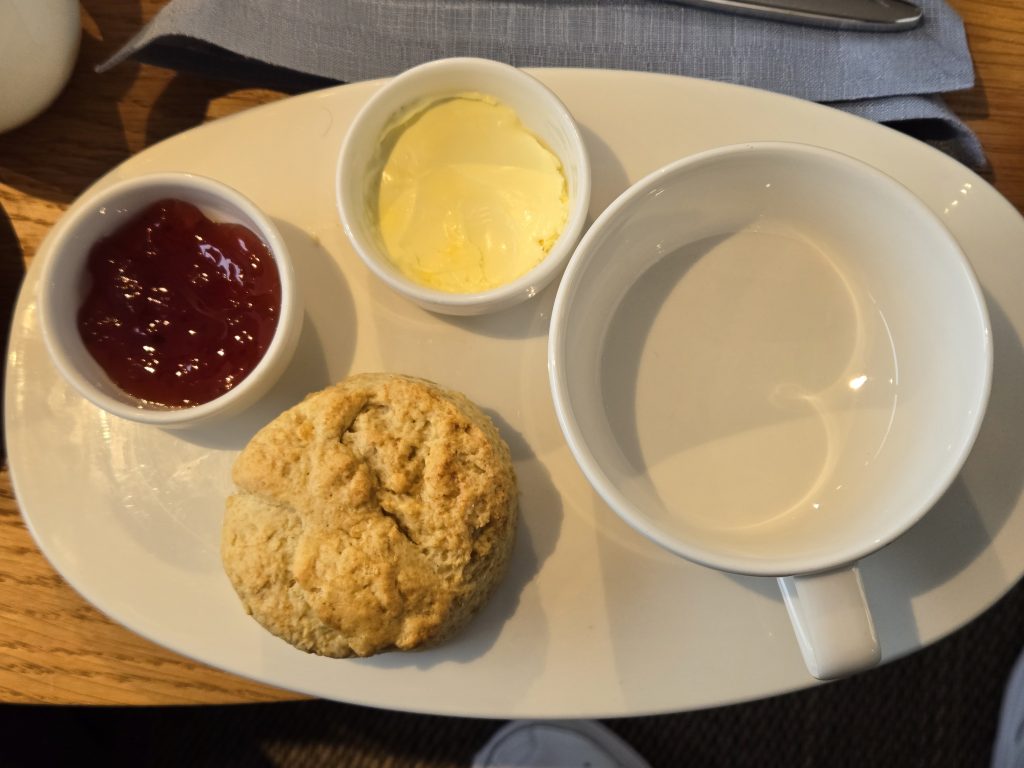
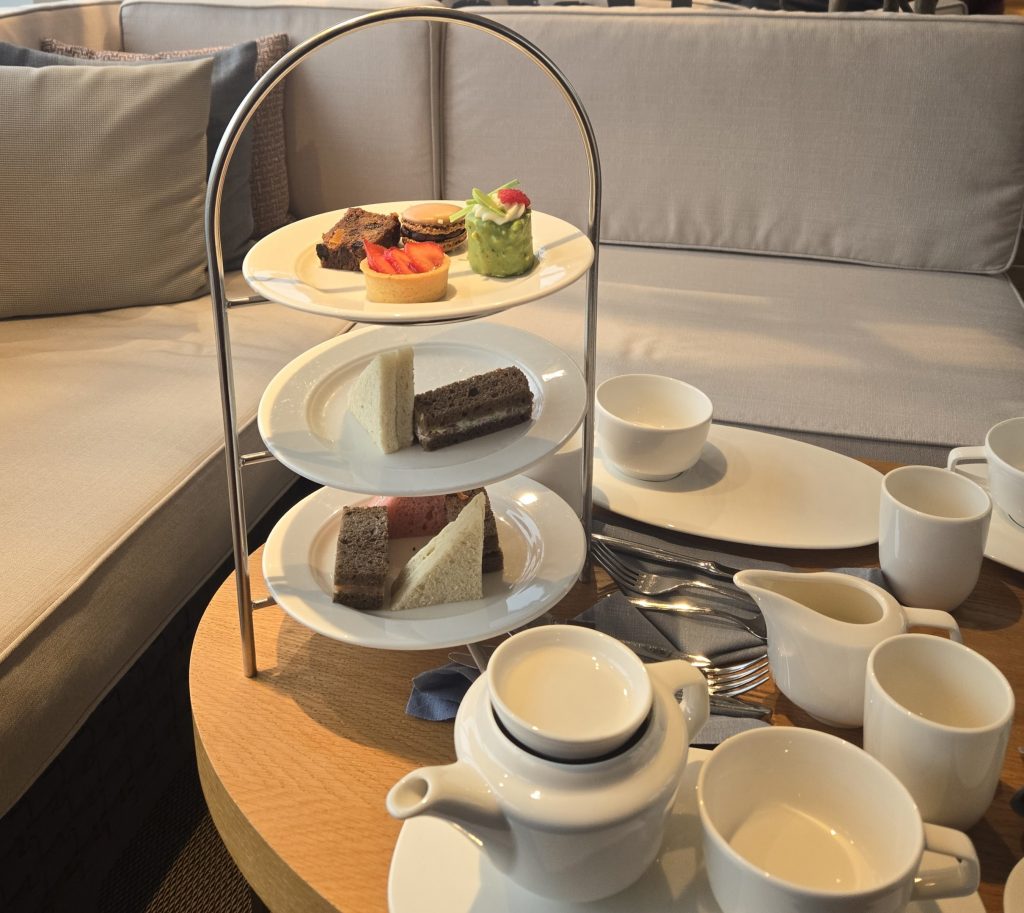
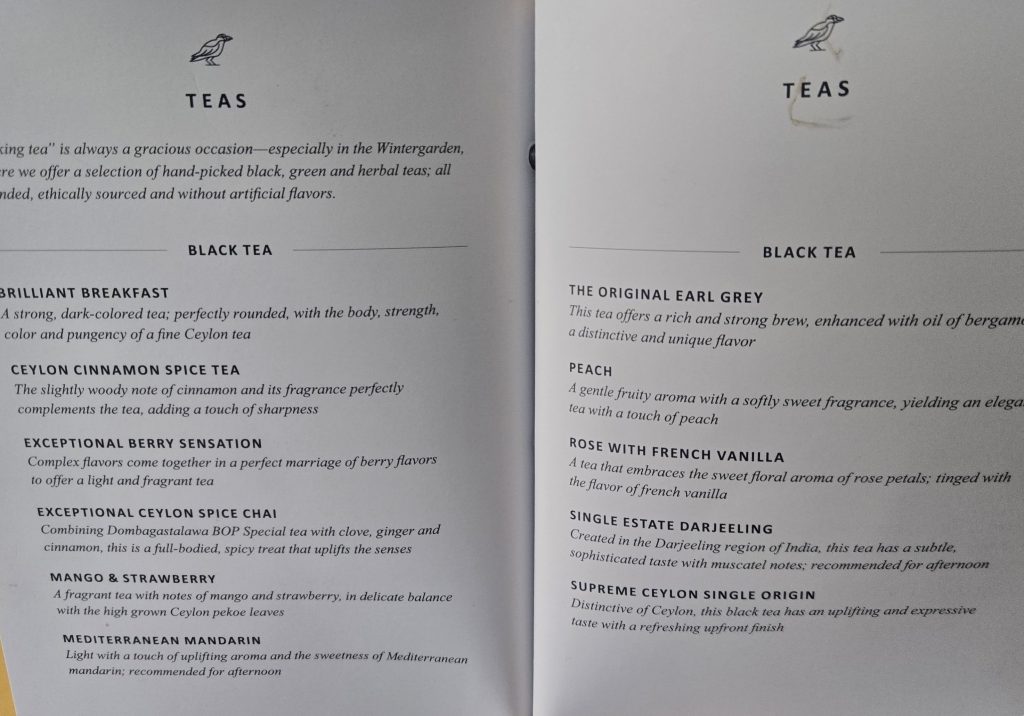
The remainder of the trip was disappointing; I’ll address that in the next post
Photo Credits
Featured image: Seyðisfjörður town view, Kasa Fue September 2019, 10:19:01. Licensed under the Creative Commons Attribution-Share Alike 4.0 International license.
Seyðisfjarðarkirkja and the Rainbow Walk Saifunny 26 July 2018. Licensed under Creative Commons Attribution-Share Alike 4.0 International
Tvísöngur, listaverk eftir Lukas Kühne frá árinu 2012, staðsett á Seyðisfirði. Cinquantecinq 6 July 2020. Licensed under Creative Commons Attribution-Share Alike 4.0 International
All other photos mine

